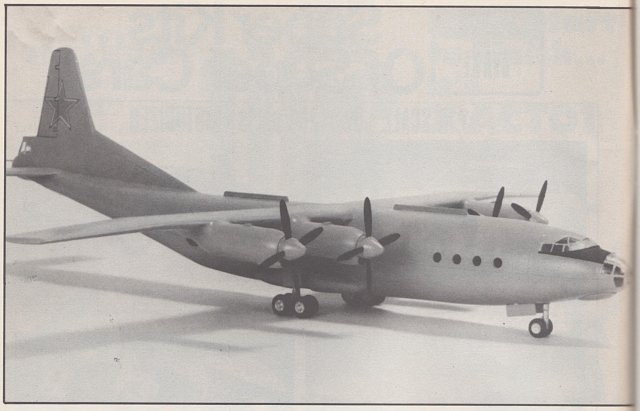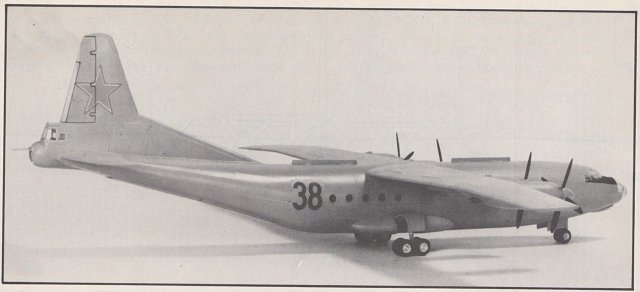| IN MAY OF 1968 the citizens of
Prague awoke to find their borders
being crossed by Soviet columns,
while assault troops and light
tanks offloaded from a flock of awkward four-engined transports liberally splashed with the insignia of the
Soviet Air Force. Czechoslovakia had
been taking its western exposure
and relaxed control too seriously
and had to be brought to heel. |
| |
| The Czechs, unwilling to go
through a bloodbath such as the
one Hungary had experienced in
1956, bowed to the inevitable with
the best grace possible and welcomed their uniformell “visitors” to
the accompaniment of futile whining
from the West. |
| |
| The aircraft which played a prominent role in this bloodless chastisement were Antonov An-12’s, four-engined tactical transports springing from the same design and mission concepts which had produced the United States’ Lockheed
C-130 Hercules, and as a result resembling their American counterparts in many ways. |
| |
| Low-slung to speed cargo-handling
through a huge door in the aft fuselage, high-winged to keep engines
and propellers clear and to allow
for oversized flaps which made
short-field operations possible, their
|
|
|
| dumpy appearance did nothing to
affect an impressive ability to fly
off of primitive fields little better
than cow pastures. |
| |
| Derived from the twin-engined Antonov An-8, the An-12 was initially
intended to be used as a military
troop and cargo transport, built in
parallel with the An-10 passenger
plane. With a glaringly obvious bombaimer’s position in the nose and
a tail gunner’s station in the tail,
complete with a pair of 23mm cannon, the An-12 was anything but
a small plane, with a span of 124 feet 8 inches and a length of 108
feet 7 inches, measuring 34 feet 6
inches from the tip of the vertical
tail to the ground. |
| |
| Powered by four turboprop engines, the plane could move out at
an amazing 400 mph, and throttled
back to a more conservative 360
mph could haul an eleven-ton
payload 1,800 miles, and still have
an hour’s fuel left in reserve. |
| |
| Anything but shy where foreign
sales are concerned, the Soviet
Union has offered its planes to governments all over the world at
extremely reasonable prices, with
a view towards establishing lines
of communication (and eventually
|
|







![]()